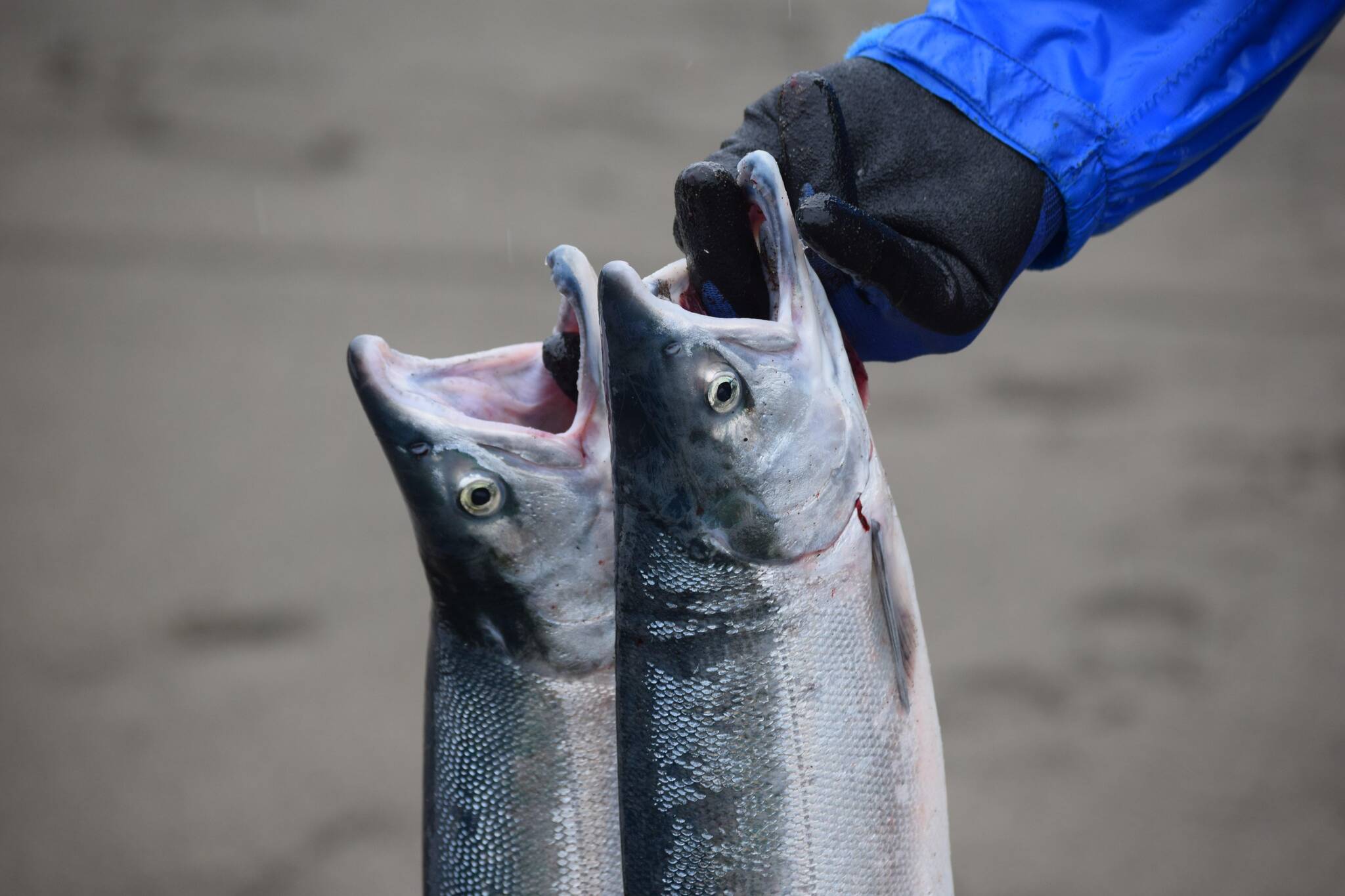Alaska Department of Fish and Game announced preliminary estimated escapement numbers for Kenai River late-run King Salmon on Thursday.
Currently, the total is estimated to be 13,952 king salmon. This falls significantly short of both the preseason forecast of 16,004 as well as optimal escapement goals of 15,000 to 30,000. The final number does achieve the sustainable escapement goal, which was set as 13,500 to 27,000.
ADF&G Area Management Biologist Colton Lipka said that the sustainable and optimal escapement goals are two separate numbers because they are implemented by two different entities.
The sustainable escapement goal is set by ADF&G and designed to provide a long-term sustainable population. The optimal escapement goal is set by the Board of Fisheries, with input from ADF&G. When it comes to management objectives, Lipka said, optimal escapement goal is the number that matters.
ADF&G attributes achieving sustainable escapement to the restrictions implemented on sport, personal use and commercial fishing this season.
Final numbers will not be available until this winter, after all postseason analysis is complete.
Current assessment by ADF&G shows that the king salmon run was on time and matched the July 27 historical midpoint of the run. Six-year-old fish made up a smaller proportion of the population than predicted, while 5-year-old fish made up more of the population than expected.
Lipka said that the distribution of ages for the fish population could shift slightly in the final numbers released this winter. For the preliminary reports, fish length is used as the indicator, as fish of the same age are generally the same size. Final numbers will use scale samples to age fish.
According to ADF&G, low numbers of king salmon on the Kenai River are a continuing consequence of “poor overall production of the stock.”
ADF&G said most fisheries were impacted by the lack of kings.
The in-river sport fishery was restricted to no retention of king salmon, with bait and multiple hooks prohibited.
Personal use fishers were prohibited from retaining king salmon.
The commercial east-side setnet fishery was limited to 24 hours a week of fishing with a reduction of gear.
Marine king salmon sport fisheries north of Bluff Point in Cook Inlet were prohibited within a mile of shore.
The Kenai River king salmon sport fishery was closed July 17 after in-season projections for escapement indicated that optimal escapement would not be achieved with continued harvesting.
This closed the commercial setnet fishery and restricted the commercial drift gillnet fishery in the Central District in accordance with the Kenai River late-Run King Salmon Management Plan, which requires the closing of these fisheries if projected escapement is less than 15,000 fish.
The closure of the east-side setnet fishery in particular caused a stir among those fishers, who argued that they do not target king salmon. They unsuccessfully sued to have the fishery reopened.
Though the preliminary total escapement of king salmon is significantly higher than the counts reported for 2021, 2020 and 2019, Lipka said that improvement cannot be taken as a promising sign because it was only achieved through significant restrictions on users.
“This was a below average run. We got this escapement only because of the heavy restrictions. The run numbers met SEG, at great cost,” Lipka said. “The overall production of kings is still low.”
ADF&G says that it is aware of the impact of restrictions and closures to users, but must continue to take necessary measures to conserve the king salmon population and attempt to rebuild the stock. The steps taken this year allowed sustainable escapement to be achieved, but optimal escapement remained out of reach.

